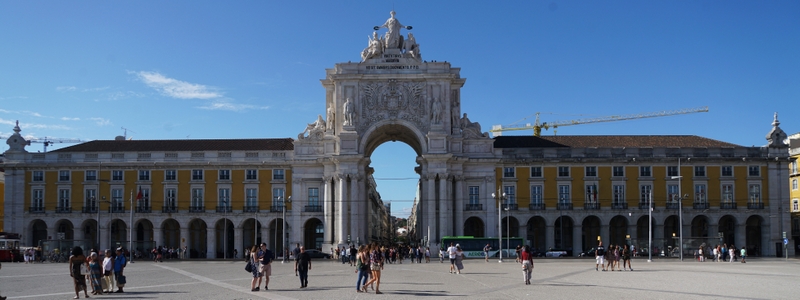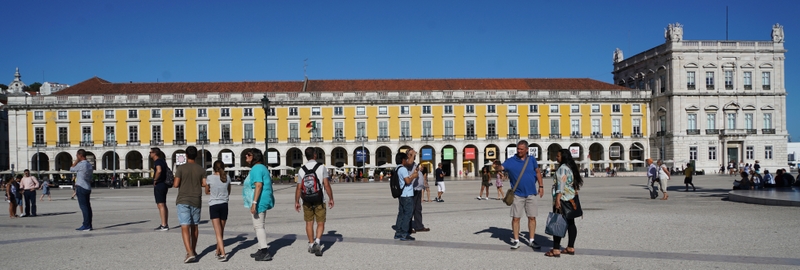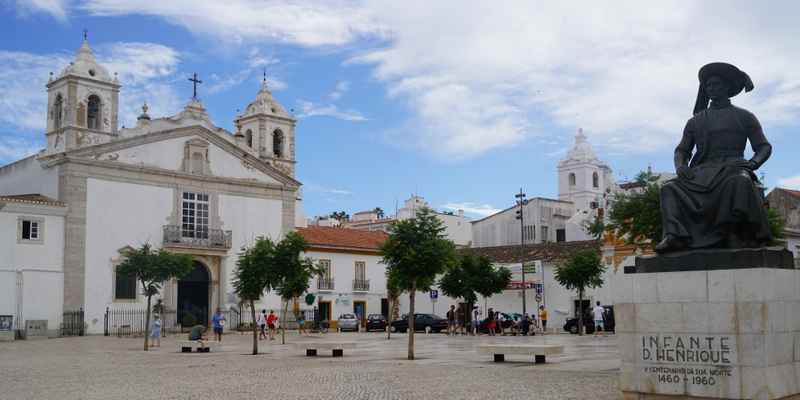Lisbon, Lagos and Faro, August 26 – 30, 2017
I am Portuguese by birth and love to get to know the country better. I have been to Portugal twice. So when my friends chose to take the Portuguese Way to Satiago de Compostela, I was delighted as I would have a chance to discover the country in greater depth.
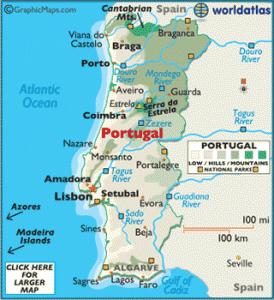 Located on the Iberian Peninsula in southwestern Europe, Portugal is the westernmost country of mainland Europe with an area of 92,212km2 and a population of about 11 million. The republic includes the Atlantic archipelagos of the Azores and Madeira. The territory of modern Portugal has been continuously settled, invaded and fought over since pre-historic times. The Pre-Celts, Celts, Carthaginians, Romans, Visigoths and Suebi Germanic peoples had all left their marks.
Located on the Iberian Peninsula in southwestern Europe, Portugal is the westernmost country of mainland Europe with an area of 92,212km2 and a population of about 11 million. The republic includes the Atlantic archipelagos of the Azores and Madeira. The territory of modern Portugal has been continuously settled, invaded and fought over since pre-historic times. The Pre-Celts, Celts, Carthaginians, Romans, Visigoths and Suebi Germanic peoples had all left their marks.
St James the Apostle arrived at a southern port on the peninsula to preach Christianity after 40 AD and went north through Portugal before arriving in Iria Flavia. This marked the beginning of spread of Christianity in the peninsula. Today some 80% of its population is Catholics.
The Muslim Moors invaded the peninsula in 711 AD. Their rule in the north lasted several decades but over five centuries in the south. For centuries, the territory was divided into various kingdoms until Afonso Henriques first proclaimed himself King of Portugal in 1139. The country prospered and in the 15th and 16th centuries, it established the first global empire becoming one of the world´s major economic, political and military powers. During the Age of Discovery, Portuguese explorers including Bartolomeu Dias and Vasco da Gama pioneered maritime exploration notably under the royal patronage of Prince Henry the Navigator and King Joao. But the country´s powers dwindled following the destruction of Lisbon in a 1755 earthquake, the occupation during the Napoleonic Wars, the independence of Brazil in 1822 and the Liberal Wars between 1828 and 1834. The 1910 revolution ended the monarchial rule and the country became a republic which has gone through periods of political and economic instability. It was hard hit by the world financial crisis in late 2000. But today, Portugal has become as a developed and high income country with an estimated GDP per capita (PPP) of over $30,000 in 2017 (OECD´s report). It is the 3rd most peaceful country in the world and one of the fifteen sustainable states.
August 26 Saturday: Venice, Italy (GMT+1) – Lisbon, Portugal (GMT)
My plane took off from Venice around 5:30pm and I arrived in Amsterdam after 7pm. By 8pm, I was on my way to Lisbon and landed in the capital after 11pm. It´s late and I took a taxi. The queue was long and the traffic control system was inefficient. I paid €16 for a short ride to Vila Nova Guesthouse near Marques de Pompal. I chose this hotel because it is close to the Avenida Park Hotel where the group would stay from August 31 to September 2. The small room without breakfast cost €62 a night. It´s not value for money but it is at least safe, clean, tidy and quiet. I was tired and had a good sleep.
August 27 Sunday: Rest Day
My plan for the next few days was simple. I would take a rest on Sunday, spend two days in the south and return to Lisbon in the evening on August 29. In this way, I could spend two full days in Faro and Lagos and two days in Lisbon before my friends arrived on August 31.
I got up late and did not go out till 10am. I strolled in the Eduardo VII Park, and went onto the Amaila Rodrigues Garden in memory of a famous fado singer. I visited a small church next to the Palacio da Justica where the Sunday mass was in progress. I sat till the end of the service.
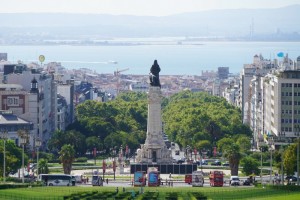 |
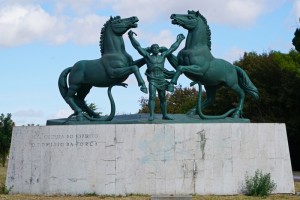 |
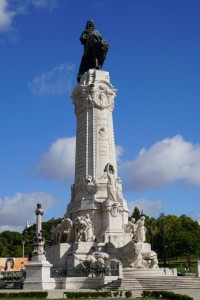 |
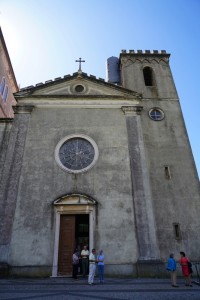 |
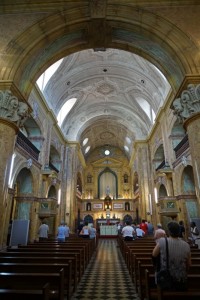 |
It was sunny with the right temperature. As the Avenida Park Hotel is next to the Eduardo VII Park, I decided to drop by and check it out. The 3-star hotel though not modern in appearance, looks comfortable with a good location and friendly staff. I therefore booked myself a room for two nights from August 29 to 31. The receptionist gave me a good rate (€70 a night for a single room including breakfast). It is much better value than the small hotel I stayed. I was hungry and went to the café next to the hotel for lunch. A plate of grilled sardines and a pint of beer cost me cost €10. Not bad!
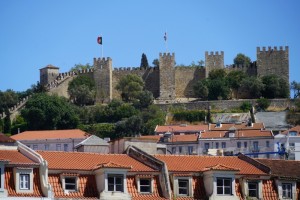 |
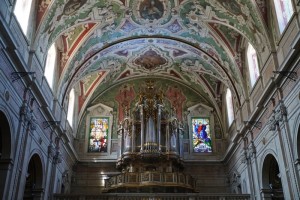 |
After lunch, I began my city walking tour. I took the side streets instead of following the Av da Liberdade lined with expensive brand shops. I strolled aimlessly around Rossio, Baix and Chiado and found the narrow streets with old buildings charming. Old fashioned trams, aged tenement buildings with washings on the lines and people make this area lively and vibrant. I walked all the way to the Pharmacy Museum located in a beautiful old mansion. From a lookout here, I saw the suspension bridge.
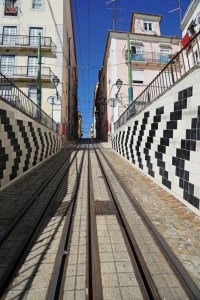 |
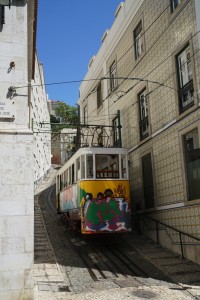 |
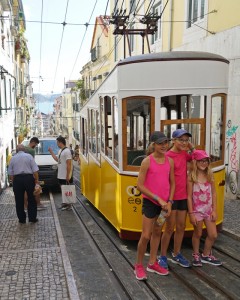 |
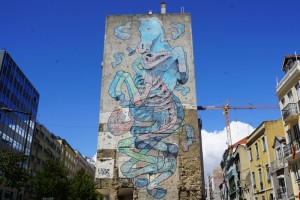 |
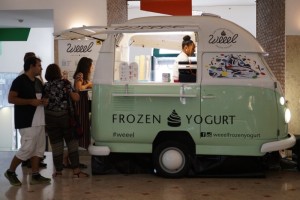 |
Then I walked downhill and soon found myself at Quatro de Julho, a poor neighbourhood, near the waterfront. After a few hundred metres, I was back in the square where the majestic monument, Rua Augusta´s Arch stands. It is the symbol of triumphant Lisbon reborn after the 1775 earthquake.
Though I was a bit tired, I carried on my exploration as the shops and architecture, the street scene and people were too interesting.
Finally I found a restaurant to have an early dinner. I ordered piri chicken and a beer for €15. But the chicken was not as delicious as those I had in South Africa. Back in my room, I spent over an hour trying to book a train or bus ticket online to Faro without success. The receptionist tried to help but failed. He advised to go to the station and get a ticket the next day. He suggested me take 10:30am train to Faro.
August 28 Monday: Lisbon – Lagos – Faro
I set the alarm at 8am and checked out by 8:30am. I left the hotel only with a small backpack. When I was at the metro station, I noticed from the board that the next train would be arriving at 8am. It took me a second to realise that my mobile phone was an hour fast. As a result, I had time to catch an early bus to Faro. The lady at the ticket office told me the 8:23am bus was full and I could take the one after 10am. To my surprise, the bus to Lagos departing in five minutes, still had a few seats. I was flexible and could go to Lagos first. So I was already on my way to the south at 8:15am (€20 one way).
I slept most of the way and arrived in Lagos around 12:30pm. On my way to the old town, I passed a shop and booked a 50-minute boat trip at 2:30pm for €20. I like this old white-washed walled city which had been under Moorish control for centuries. It is charming though touristy. The architectural styles show the Moorish influence.
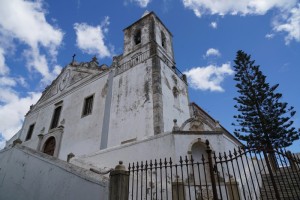 |
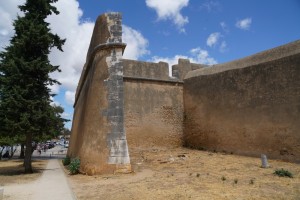 |
On recommendation of a grocery owner, I went to a seafood restaurant around 1:15pm. The food was good but the service was slow. By the time my mixed seafood grill arrived after 2pm, I had almost finished my cold beer. My meal only cost €13. The nice surprise of the day was my meeting with Sylvis from Hamburg. She was in Lagos for her Portuguese lesson and had lunch in the same restaurant. We started to chat while waiting. Then I met up her again on the street after my boat trip. Fantastic!
I finished my meal within ten minutes and rushed to the pier. The drawbridge was just drawn up to let a sailing boat through. I was therefore late. Fortunately the boat had not gone and the skipper came back to fetch me while 10 other passengers were sitting in the boat. The coast around Lagos is famous for its landscape with beaches, caves and cliffs. It is fine on its own but cannot be compared with those in Corsica.
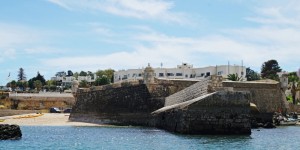 |
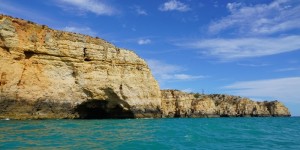 |
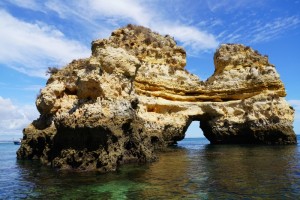 |
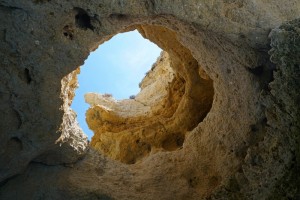 |
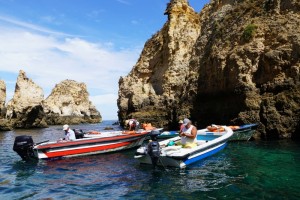 |
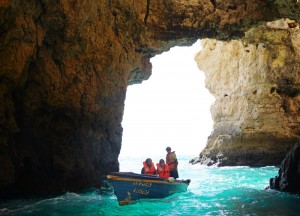 |
When I saw Sylvis after the boat trip, she took me to the cathedral and other parts of the old town I had not visited before. We had a delightful chat and she insisted to treat me with a drink. I hope to meet her again.
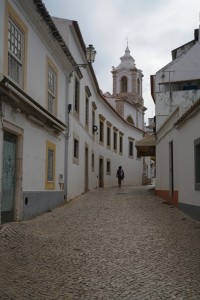 |
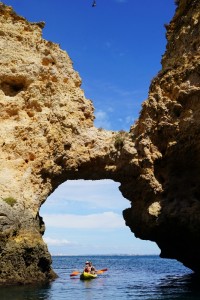 |
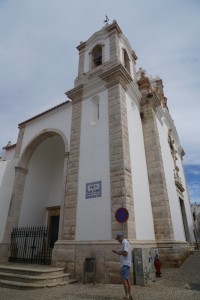 |
My bus to Faro left the terminal before 5:30pm (€5,95 for one-way). As the bus went through all the villages and new developments along the coast, the short journey took over 3 hours (longer than usual). I should have taken the train which takes one hour and forty-five minutes.
It was dark and I had problem in finding the Penguin Hostel. Finally a lady from a flower shop gave me a lift. I was lucky to meet so many wonderful and kind people on the road! It was around 8pm when I checked in this nice and clean hostel located in a charming old house. I had cod and white wine for €15 a restaurant in the municipal market opposite the hostel. The cod was overcooked and tasted like rubber. I was tired and had a good sleep.
August 29 Tuesday: Faro – Lisbon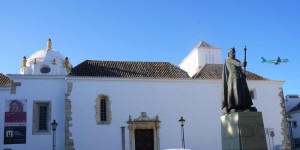
I got up early as usual. After breakfast, I left my backpack at the hostel before heading to the port. A popular trip here is a boat ride to three islands namely Deserta Island, Farol Island and Culatra Island of the Ria Formosa Natural Park. The park encompasses an area of about 18000 hectares and is protected from the sea by five barrier-islands and two peninsulas. Due to its shallow waters, the lagoon is a nursery for some oceanic species. The lagoon is teaming with fish. It has one of the world´s largest populations of seahorses. Shellfish farming is also an important economic activity in the tidal flats. About 80% of the country´s clam exports come from here. Bird watching is also popular.
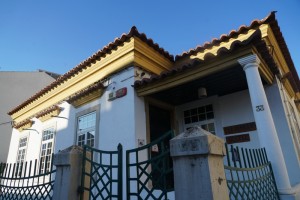 |
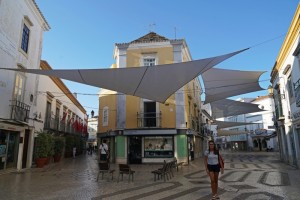 |
As the boat trips would start around 10am, I spent almost two hours strolling in this historic town which is another gem walled city full of beautiful buildings. Another nice surprise!
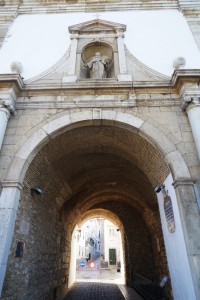 |
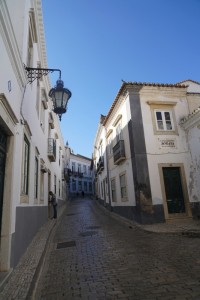 |
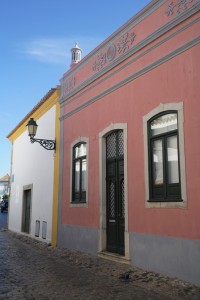 |
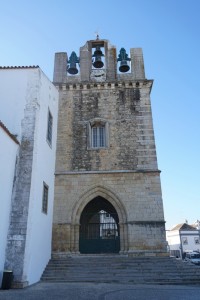 |
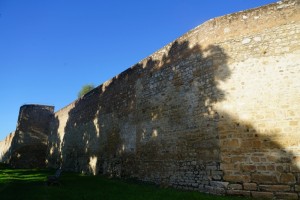 |
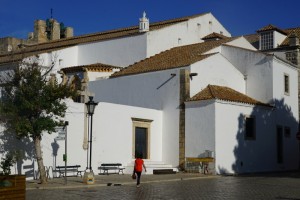 |
I paid €30 for the boat trip. There were eight other tourists on the boat. We spent 40 minutes on the Deserta Island which has no permanent inhabitation, except a few cabins for fishermen and a restaurant. We followed the boardwalk to reach the red lighthouse which stands on the southernmost point of mainland Portugal.
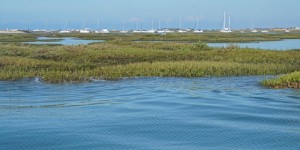 |
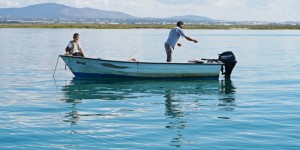 |
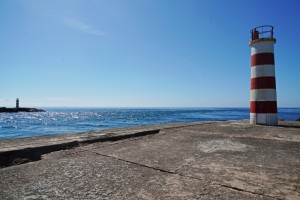 |
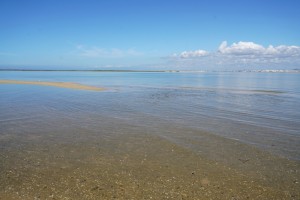 |
Then the boat took us to the Farol Island where we stayed till 11:40am. There is a tall lighthouse on the island, thus the name of the island. It was hot. Many people were lying on the beach and swimming.
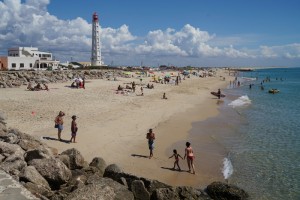 |
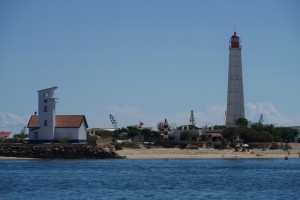 |
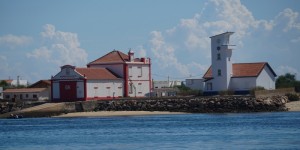 |
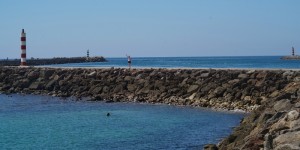 |
After walking around the island for half an hour, I bought an ice cream with two large scoops for €2,80 and found a shady seat to read an old issue of The Economist.
We moved onto the Culatra Island which is now a fishermen village with about 1000 permanent residents. They are all fishermen who have been carried on fishing in the traditional way in small boats. Our skipper arranged us to eat at a local restaurant. I sat with a mother and daughter who migrated from Ukrain to Switzerland 11 years ago. The mother who is 44 looks so young and fit that they resemble sisters. I had half a dozen of oysters, a grilled seabass and a pint of beer for €21.
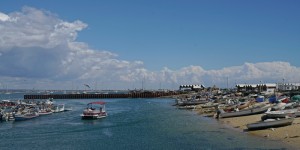 |
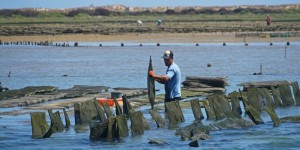 |
I walked around the island. Most houses close to the port are not big but neat. We were back on the boat before 2:50pm. On our way back, we sailed close to the Hangares Island and watched a man picking and shaking up bags of oysters in the flats during low tide. Further away are workers looking for clams in the flats.
By 3:30pm, we were back in Faro. I had an enjoyable and relaxing day and a delicious lunch. Unfortunately, I missed the 4:30pm bus to Lisbon as I had to go to hostel to pick up my backpack (I should have carried it with me!) So I took the 5:56pm train and got a first class ticket for €27,80. Great value! The train made a dozen of stops and only gathered speed when we were approaching Lisbon. I got off at the Zoologica Station at 9:15pm where I took the metro to Marques d Pompal. I returned to the guesthouse to pick up my luggage before checking in the Avenida Park Hotel. The room is spacious and comfortable with a balcony overlooking the park. I had a great day in Faro, an excellent seafood lunch and a comfortable room!
August 30 Wednesday: Lisbon
I bought a 72-hour Lisbon Visitor Card for €40. I ended up spending a day in the Belém area which was associated with the great Age of Discovery. From here vessels left to discover the new worlds and Portugal created a nautical revolution and established the first global economy 600 years ago.
After breakfast, I took bus 727 and got off at the Jeronimos Monastery, a World Heritage property. Constructed on the orders of King Manuel I in 1501, it is considered a brilliant synthesis of European late Gothic and early renaissance trends. I visited the church and the cloister both of which are stunning and magnificent.
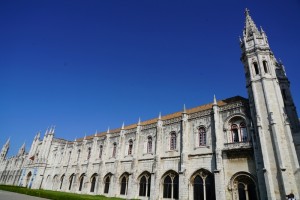 |
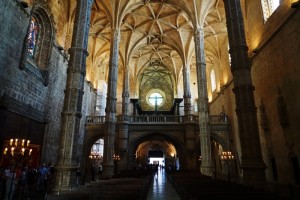 |
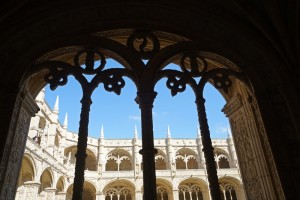 |
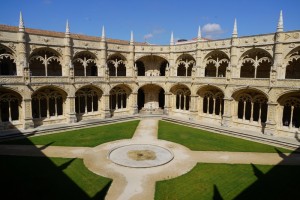 |
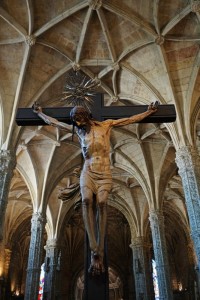 |
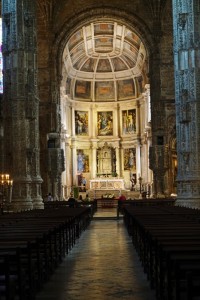 |
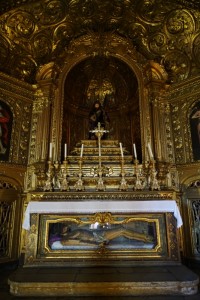 |
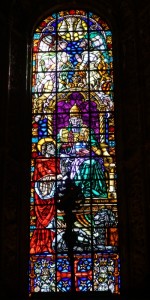 |
I visited the National Archaeological Museum after the monastery. I find the special exhibition with exhibits from archaeological sites in Algarve area more interesting than the permanent exhibits. It was hot and I felt tired. I spent over an hour in a local restaurant having codfish cake, lamb stew and a beer. I only paid €13,50 for a wholesome and delicious lunch.
After a good lunch, I felt sleepy. But I was determined to make full use of my Lisbon Card to visit a few more places. I stopped at the National Coach Museum, which has a unique collection of coaches ranging from 17th to 20th centuries. The coaches are beautiful and impressive. The illustrations and layout are superb.
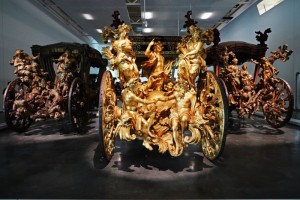 |
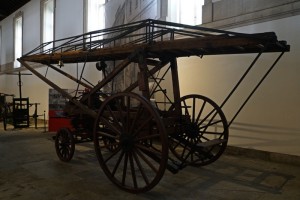 |
Finally I went to the Museu Arte Arquitetura Tecnologia (MAAT) and wandered through the iconic Boiler Room in the Power Station Building which is more interesting and impressive than the art installations. Frankly I do not appreciate or understand most of the contemporary art works and their meanings. There is an installation by Ana Pérez- Quiroga showing her home-work space. So what? The installation by Fernanda Fragateiro titled “From the Archieve, to Materials, to Construction” is totally lost on me. There are a few rooms showing works by new artists. The only one I can appreciate is the exhibition by Bai Ming, a porcelain artist from China, who shows his white-blue theme works.
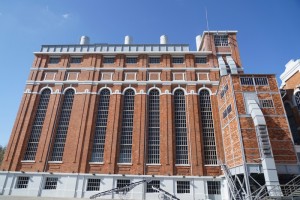 |
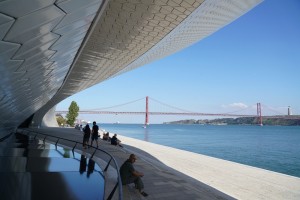 |
I walked to the new Oval Gallery which has an installation by Carlos Garaicoa in the form of a garden. He intends to explore the relationship between the city and individual with faulty lamps. I cannot understand at all. It was about 5pm when I came out of the Oval Gallery. Views of the suspension bridge and river from the roof top of the gallery are great . I was tired and took bus 727 back to the hotel.



